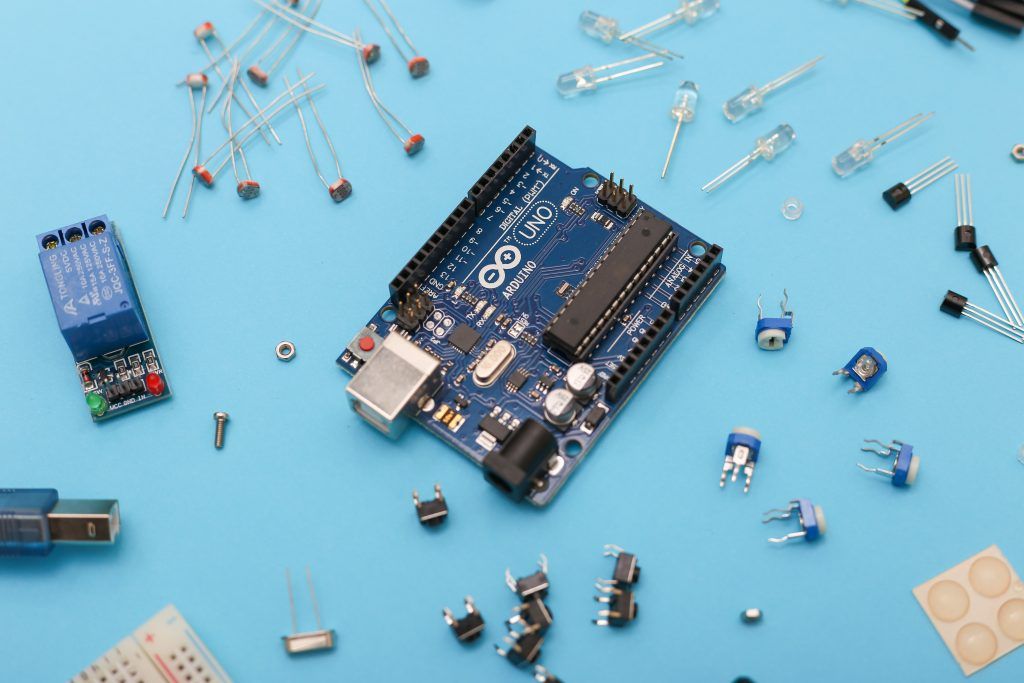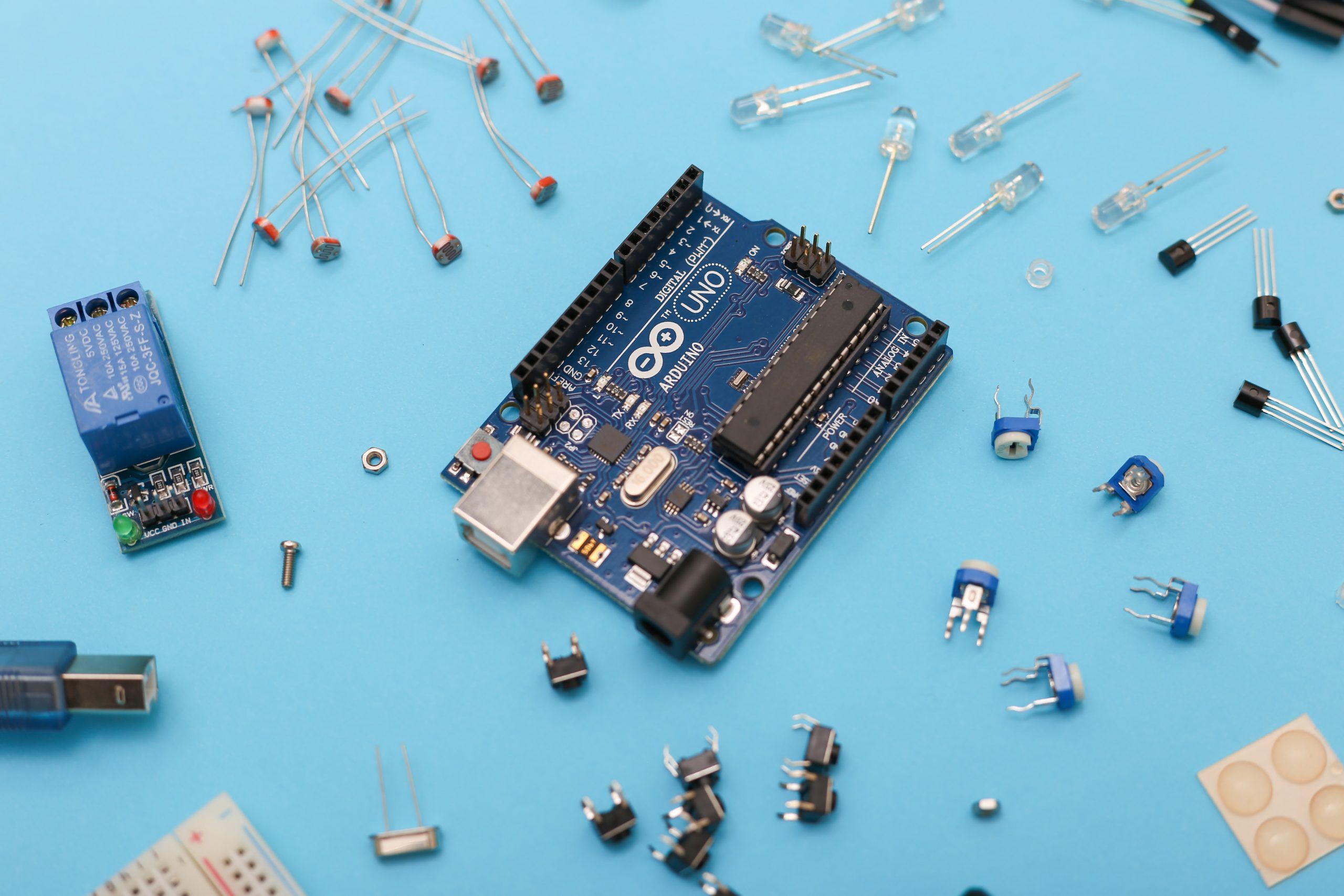What is Physical computing?
Physical computing is interacting with the real world by working with a hardware device along with the system/screen. Physical computing also provides the students an opportunity to explore the hardware aspects (electronics) along with the software aspects (computational skills). Arduino is a well-known physical computing platform. The joy of physical computing is that you can interact with the real world by just using an Arduino board, some sensors, and motors.
Arduino is a tool that helps us in creating interactive systems. Arduino board is a microcontroller that provides an interesting hands-on learning experience where students can explore breadboard cables, sensors, lights, buttons, switches, LCDs, etc.
What are microcontrollers?
We all are surrounded by microcontrollers in our daily lives. For eg. computer keyboards, monitors, telephone systems, microwave ovens, washers and dryers, security systems, lawn sprinkler station controllers, music/video entertainment components, etc. All these devices perform a specific task because they have been programmed to perform a particular task. Similarly, Arduino is an intelligent microcomputer (board with a processor) that only performs a task for which it is coded.

What is an Arduino?
Arduino is basically a small computer on a single circuit board that uses input from the environment to make information or decisions or automate behavior. This little computer can be connected to various different external components, like light sensors, temperature sensors, speakers, etc., to make things happen in the real world—from lighting up LEDs on your home theatre system, tracking down runaway balloons, turning on fans with photoresistors, measuring how much coffee you’ve poured into mugs, controlling lights around your house, etc.
Arduino is the new way to control electronic devices. Arduino comes with an easy-to-use hardware and software platform that lets people of all walks of life build interactive products. The Arduino board has 14 digital input/output pins (of which 6 can be used as PWM outputs), 6 analog inputs, a 16 MHz quartz crystal, a USB connection, and a power jack. Arduino boards can be powered by batteries or from external sources such as an AC adapter or via USB from a computer. This implies they can be used as stand-alone installation without requiring the computer. This feature also got highlighted inWall Street Journal.
Arduino is gaining popularity in schools and universities across the world – more and more of them are teaching Arduino programming. Arduino Projects gives students an opportunity to explore their creativity. It makes problem-solving easy for kids.

Reasons to learn Arduino
Robotics is an exciting field that’s now more accessible to students than ever before. Arduino used in Robotics makes the process of learning about robotics much easier for students. At SkoolofCode we offer Robotics courses. Arduino is used for learning the concepts of Robotics. Students can get introduced to STEAM concepts while having fun working on projects. Let’s explore why we should learn Arduino.
- Arduino is also used for prototyping before moving on to the actual design. Arduino is a great platform for beginners, hobbyists, and tinkerers.
- Arduino circuits can also be made online using a platform called TinkerCAD. Students can make circuits using different components such as motors, LEDs, sensors. They can interface the components with Arduino. Also, they have the opportunity to code the Arduino and test it through the simulation tool.
- Arduino has a strong community that would be glad to help you get started. Arduino code can be uploaded from the Arduino board directly to your computer via USB. This means that Arduino projects can easily be made into standalone products without having to mess around with assembling complex hardware setups. You can also control external devices such as sensors and actuators by sending instructions over serial communication (USB, Bluetooth Arduino).
- Arduino can be programmed with Block-Based as well as text-based coding offering both a low bar of entry and a higher level of the ceiling. For beginner level, Arduino can be programmed with Block level platforms such as mBlock, S4A (Scratch for Arduino), Mixly, ArduBlock, etc. For higher-level, the Arduino can also be programmed with Arduino IDE, C, or Python and we at SkoolofCode offer online coding classes for kids so that they can program Arduino.
- Arduino is comparatively easy to learn online. Arduino is very simple and can also be used by people who are not comfortable with programming.
- Arduino’s ease of use makes it possible to quickly start building interactive objects. Students gain hands-on experience while working with Arduino, which helps them to acquire problem-solving skills.
- Arduino provides an easy learning environment for students interested in STEAM fields (Science Technology Engineering Arts Mathematics).
- Arduino boards are easily available and are low in cost. More information about how this low cost technology is used in real life can be accessed in the New York Times news article.

Arduino should be introduced in schools as it provides an opportunity for students to explore their creativity and problem-solving skills by building products themselves rather than learning about products during theory classes. So, if you want your students or children to learn physical computing Book a FREE trial class today.

